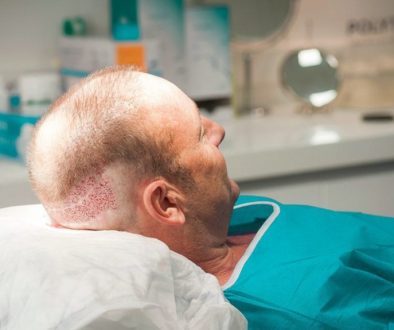Today’s Advancements in Hair Transplant Scar Revision by Coalition Member Dr. William Lindsey
This comment, addressed by Coalition hair restoration surgeon Dr. William Lindsey, was shared by a member of our Hair Loss Social Community and Discussion Forums:
Recently, I underwent hair transplant scar revision surgery after a disappointing follicular unit transplantation (FUT) procedure earlier this year. Unfortunately, the repair was unsuccessful, and now the strip scar is even more apparent. I know scarring and patient physiology are unique, but I’m wondering if this is common?
 I feel for you in your plight. Unfortunately there are no guarantees with any type of surgery, and in particular, the best predictor of poor scarring is … previous poor scarring.
I feel for you in your plight. Unfortunately there are no guarantees with any type of surgery, and in particular, the best predictor of poor scarring is … previous poor scarring.
We do lots of follicular unit transplantation scar repair cases, and I post lots of scar pictures. Having performed a lot of facial plastic surgery, I feel that I can suture better than most, but this doesn’t always mean that I get great scars.
Scar results generally are related to part patient physiology, part doctor skill, and probably part luck.
Patients with a family history of poor scarring, or who are in demographic groups more likely to have wide scars (black and asian patients), are at increased risk for poor scars – whether presenting with a virgin head or a scar revision.
Doctor skill and limiting skin edge tension by a variety of techniques definitely plays a role too. Entire books are written on this subject, but in summary, if you can limit the pull on the skin edges in the universal donor region, either by a skinny strip or by deep sutures, or both, you’ll decrease the risk, but not eliminate it, of getting wide scars.
Now your plight calls to mind a fellow that I did a scar revision on 8 months ago or so. He’d had 2 wide strip scars (resulting from hair transplantation with another clinic), criss-cross across the back of his head and, as he has a crew cut, they were quite noticable. I felt that he had a nice amount of scalp laxity and that we could improve one scar 50% or more. I excised the scar, and did a nice 2 (maybe even 3) layer closure and things went really smoothly. At a week, we took out his sutures, and he was to return at a month. Now I ask all patients to do this so I can look at the scar and deal with any small problems early on, before they become big problems, but in particular I want scar cases to come at that appointment. Unfortunately, he did not return for the scheduled meeting.
When he walked in at 7 months, I felt that he really didn’t look much better than before his case with me, and I’m pretty confident that he had a top notch revision, as it really closed easily and without tension.
So, now he wants to do it again and at this point I’m reluctant. There is nothing different that I’d do, and I think he just doesn’t scar well. So I believe we will likely place follicular unit extraction (FUE) grafts into the scar. However, like standard scar revision, these results are not guaranteed.
However, fortunately most scar revisions do work, and all scars go through a “worsening stage” before improving, so hopefully your revision will start to improve shortly.
Dr. William Lindsey
_______________
Blake – aka Future_HT_Doc
Editorial Assistant and Forum Co-Moderator for the Hair Transplant Network, the Hair Loss Learning Center, the Hair Loss Q&A Blog, and the Hair Restoration Forum
Follow our community on Twitter
Watch hair transplant videos on YouTube
Get Proven Hair Loss Treatments at the Best Prices by visiting our new Online Hair Loss Product Store
Technorati Tags: hair restoration surgeon, Hair Loss, hair transplant scar, follicular unit transplantation, FUT, strip scar, follicular unit transplantation scar, hair transplantation, follicular unit extraction, FUE



